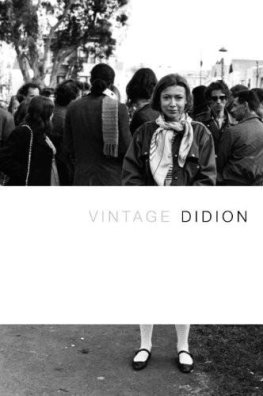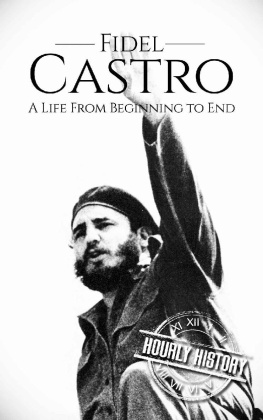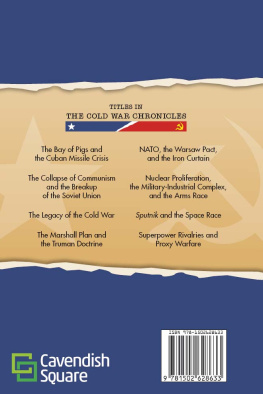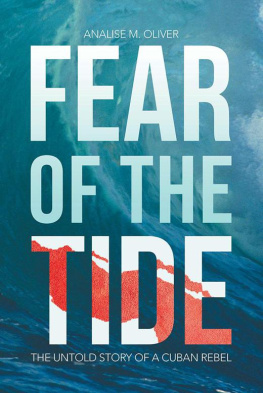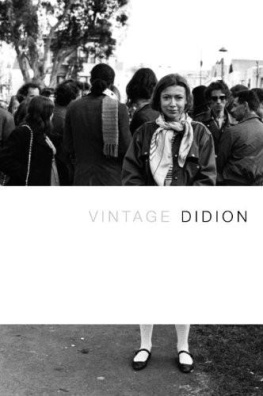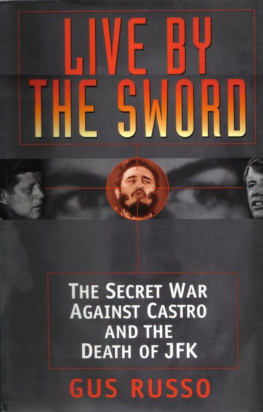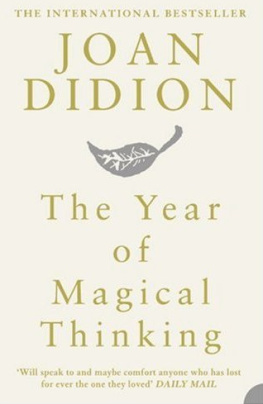M I A M I
J O A N D I D I O N
This book is for
Eduene Jerrett Didion
and Frank Reese Didion
ONE
one
Havana vanities come to dust in Miami. On the August night in 1933 when General Gerardo Machado, then president of Cuba, flew out of Havana into exile, he took with him five revolvers, seven bags of gold, and five friends, still in their pajamas. Gerardo Machado is buried now in a marble crypt at Woodlawn Park Cemetery in Miami, Section Fourteen, the mausoleum. On the March night in 1952 when Carlos Pro Socarrs, who had helped depose Gerardo Machado in 1933 and had fifteen years later become president himself, flew out of Havana into exile, he took with him his foreign minister, his minister of the interior, his wife and his two small daughters. A photograph of the occasion shows Seora de Pro, quite beautiful, boarding the plane in what appears to be a raw silk suit, and a hat with black fishnet veiling. She wears gloves, and earrings. Her makeup is fresh. The husband and father, recently the president, wears dark glasses, and carries the younger child, Mara Elena, in his arms.
Carlos Pro is now buried himself at Woodlawn Park Cemetery in Miami, Section Three, not far from Gerardo Machado, in a grave marked by a six-foot marble stone on which the flag of Cuba waves in red, white and blue ceramic tile, carlos pro socarrs 1903-1977, the stone reads, and directly below that, as if Carlos Pro Socarrss main hedge against oblivion had been that period at the University of Havana when he was running actions against Gerardo Ma-chado: miembro del directorio estudiantil universitario 1930. Only then does the legend presidente de la repblica de Cuba 1948-1952 appear, an anticlimax. Presidencies are short and the glamours of action long, there among the fallen frangipani and crepe myrtle blossoms at Woodlawn Park Cemetery in Miami. They say that I was a terrible president of Cuba, Carlos Pro once said to Arthur M. Schlesinger, Jr., during a visit to the Kennedy White House some ten years into the quarter-century Miami epilogue to his four-year Havana presidency. That may be true. But I was the best president Cuba ever had.
Many Havana epilogues have been played in Florida, and some prologues. Florida is that part of the Cuban stage where declamatory exits are made, and side deals. Florida is where the chorus waits to comment on the action, and sometimes to join it. The exiled Jos Mart raised money among the Cuban tobacco workers in Key West and Tampa, and in 1894 attempted to mount an invasionary expedition from north of Jacksonville. The exiled Fidel Castro Ruz came to Miami in 1955 for money to take the 26 Julio into the Sierra Maestra, and got it, from Carlos Pro. Fulgencio Batista had himself come back from Florida to take Havana away from Carlos Pro in 1952, but by 1958 Fidel Castro, with Carlos Pros money, was taking it away from Fulgencio Batista, at which turn Carlos Pros former prime minister tried to land a third force in Camagey Province, the idea being to seize the moment from Fidel Castro, a notably failed undertaking encouraged by the Central Intelligence Agency and financed by Carlos Pro, at home in Miami Beach.
This is all instructive. In the continuing opera still called, even by Cubans who have now lived the largest part of their lives in this country, el exilio, the exile, meetings at private houses in Miami Beach are seen to have consequences. The actions of individuals are seen to affect events directly. Revolutions and counterrevolutions are framed in the private sector, and the state security apparatus exists exclusively to be enlisted by one or another private player. That this particular political style, indigenous to the Caribbean and to Central America, has now been naturalized in the United States is one reason why, on the flat coastal swamps of South Florida, where the palmettos once blew over the detritus of a dozen failed booms and the hotels were boarded up six months a year, there has evolved since the early New Years morning in 1959 when Fulgencio Batista flew for the last time out of Havana (for this flight, to the Dominican Republic on an Aerovas Q DC-4, the women still wore the evening dresses in which they had gone to dinner) a settlement of considerable interest, not exactly an American city as American cities have until recently been understood but a tropical capital: long on rumor, short on memory, overbuilt on the chimera of runaway money and referring not to New York or Boston or Los Angeles or Atlanta but to Caracas and Mexico, to Havana and to Bogot and to Paris and Madrid. Of American cities Miami has since 1959 connected only to Washington, which is the peculiarity of both places, and increasingly the warp.
In the passion of el exilio there are certain stations at which the converged, or colliding, fantasies of Miami and Washington appear in fixed relief. Resentments are recited, rosaries of broken promises. Occasions of error are recounted, imperfect understandings, instances in which the superimposition of Washington abstractions on Miami possibilities may or may not have been, in a word Washington came to prefer during the 1980s, flawed. On April 17, 1985, the twenty-fourth anniversary of the aborted invasion referred to by most Americans and even some Cubans as the Bay of Pigs, what seems in retrospect a particularly poignant progression of events was held in Miami to commemorate those losses suffered in 1961 at Playa Girn, on the southern coast of Matanzas Province, by the 2506 Brigade, the exile invasion force trained and supportedup to a point, the famous point, the midnight hour when John F. Kennedy sent down the decision to preserve deniability by withholding air coverby the United States government.
The actual events of this 1985 anniversary were ritual, and as such differed only marginally from those of other years, say 1986, when Jeane Kirkpatrick would be present, to wave small souvenir flags, American and Cuban, and to speak of how different the world would have been had the brigade prevailed. By one minute past midnight on the morning of the 1985 anniversary, as in years before and after, some thirty members of the 2506, most of them men in their forties and fifties wearing camouflage fatigues and carrying AR-15 rifles, veterans of the invasion plus a few later recruits, had assembled at the Martyrs of Girn monument on Southwest Eighth Street in Miami and posted a color guard, to stand watch through the soft Florida night. A tape recording of The Star Spangled Banner had been played, and one of La Bayamesa, the Cuban national anthem. No temis una muerte gloriosa, the lyric of La Bayamesa runs, striking the exact note of transcendent nationalism on which the occasion turned. Do not fear a glorious death: To die for patria is to live.
By late morning the police had cordoned off the weathered bungalow on Southwest Ninth Street which was meant to be the Casa, Museo y Biblioteca de la Brigada 2506 del Exilio Cubano, the projected repository for such splinters of the true cross as the 2506 flag presented to John F. Kennedy at the Orange Bowl, twenty months after the Bay of Pigs, when he promised to return the flag to the brigade in a free Havana and took it back to Washington, later expanding its symbolic content geometrically by consigning it to storage in what explicators of this parable usually refer to as a dusty basement. On the morning of the anniversary ground was being broken for the renovation of the bungalow, an occasion for Claude Pepper, fresh from the continuing debate in the House of Representatives over aid to the Nicaraguan contras, to characterize the landing at Girn as one of the most heroic events in the history of the world and for many of those present to voice what had become by that spring the most urgent concern of the exile community, the very concern which now lends the occasion its retrospective charge, that the freedom fighters of the eighties not be treated by the Reagan administration as the men of the 2506 had been treated, or believed that they had been treated, by the Kennedy administration.

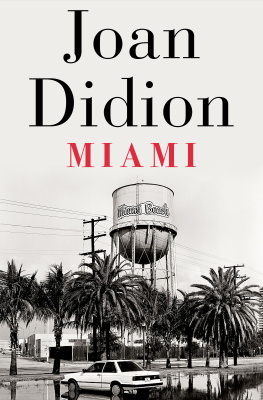
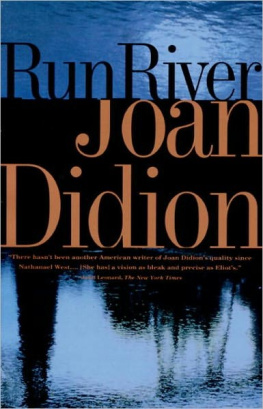
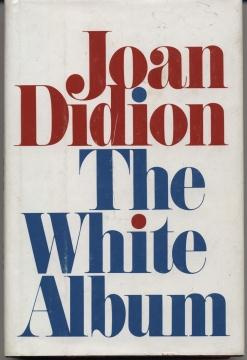

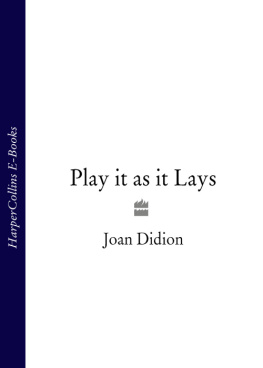
![Didion - The white album: [essays by]](/uploads/posts/book/198618/thumbs/didion-the-white-album-essays-by.jpg)
